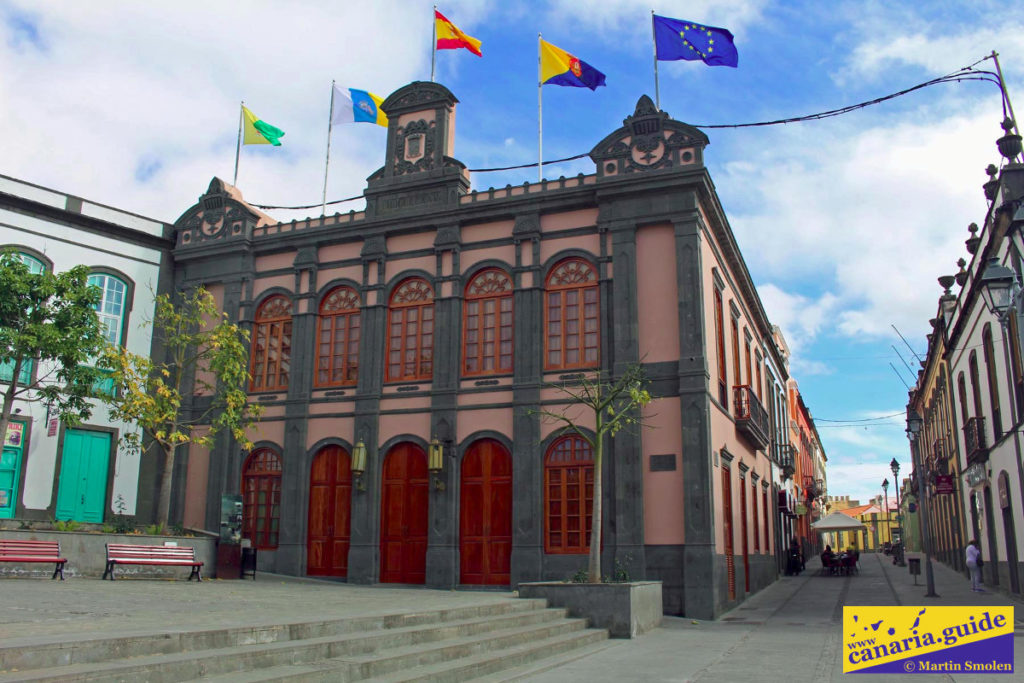The national flag is one of the basic symbols of the state in every country. It is usually used to denote buildings in which state and local authorities are located. It is also used in the official rooms of representatives of state and self-governing bodies. In addition, the national flag is also used during public holidays. The national flag is also used during international events or important events of a national or local character.
In today’s article, we will get acquainted with the Spanish national flag, but also with the flags that you may encounter when visiting Gran Canaria.
Spanish flag.
The flag of Spain (Spanish Bandera de España), as defined in the Spanish Constitution of 1978, consists of three horizontal two-colored stripes. The top and bottom are red and the middle bar is yellow, with the yellow bar twice the width of both red bars. The middle bar is often called the more archaic term gualda. The favorite name of the flag among the Spaniards is Rojigualda. We can translate it as a red weld.
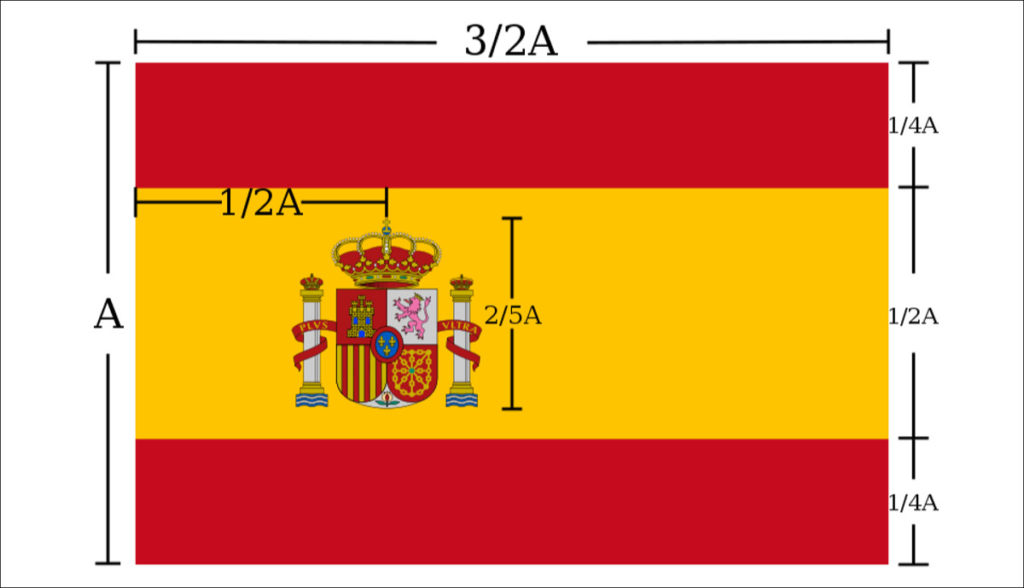
The appearance of the current flag of Spain is based on the flag of the Spanish Navy from 1785, the so-called Pabellón de la Marina de Guerra. It was chosen by King Charles III. Spanish from 12 different flags designed by Antonio Valdés y Bazán.
The flag remained focused on the sea for a long time, flying over coastal fortresses, naval barracks and other assets under the administration of the navy. It was not until the war in the Iberian Peninsula (during the Napoleonic invasion) that the flag came inland, through naval regiments that fought inland. In 1820, the first Spanish ground unit, the La Princesa Regiment, received the flag. It did not become the official flag of Spain until 1843, when it was declared a state symbol by Queen Elisabeth II. Spain.
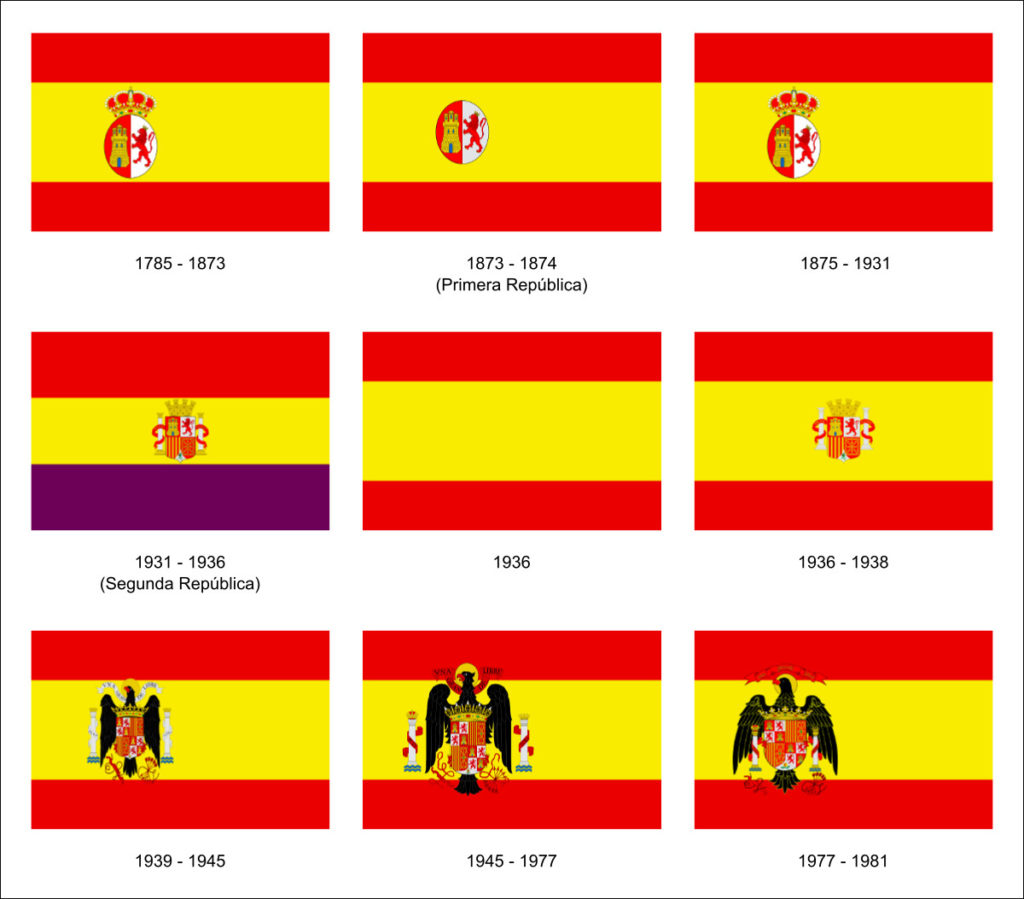
Since then, the color scheme of the flag has remained intact, with the exception of a short period of the Second Republic (1931-1936). The changes concerned the coat of arms located in the center of the flag.
Royal symbols
It should not be forgotten that the flag is a symbol of the state, but not of the king, although he is the highest representative of the state.
The King of Spain uses a flag known as the Royal Standard. The royal standard of Spain consists of a crimson square with the coat of arms of the king in the middle. You can usually see it at the official royal residence of the Palacio de la Zarzuela, but also at other places used by the royal family, including official cars.
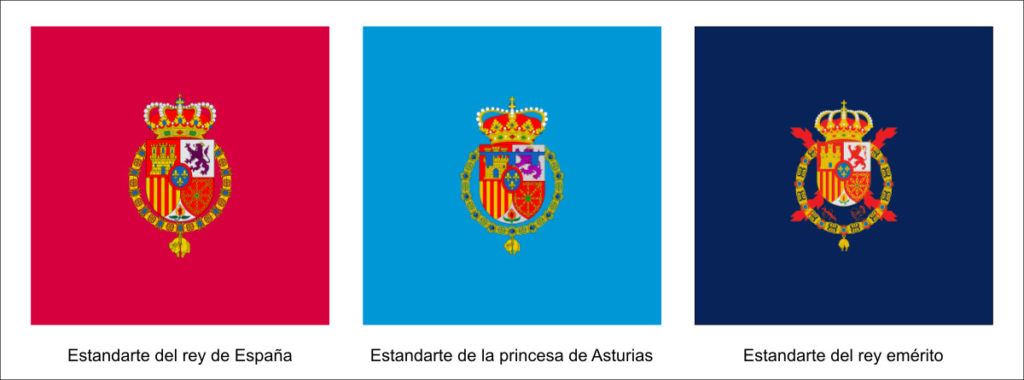
The heiress of the crown, the princess of Asturias, has her own standard. It is characterized by a light blue square, which represents the color of Asturias and the coat of arms of the Princess of Asturias. King Carlos I, king Emeritus, also uses his own standard. You can see both standards only at their residences, or during official events held under the patronage of the Princess or the King of Emeritus.
Yellow and red date back to the Middle Ages
Spain was formed by the union of two kingdoms, Castile and Aragon. The original medieval kingdoms had their own heraldic symbols, and their navies used their own flags and standards on the Mediterranean and Atlantic Oceans, depending on where they had their areas of influence.
The crown of Castile, since the unification of the kingdoms of Castile and Leon in 1230, has used a flag with a castle of Castile and a purple lion with a crown.

The flag of the Crown of Aragon was a yellow flag with four red stripes. This element is still common on the current flags of the territory that formed the crown: Aragon, Catalonia, Valencia, the Balearic Islands and Roussillon in France.
The Castilian and Aragonese flags and coats of arms merged when the Catholic monarchs of Isabel I of Castile and Ferdinand II Aragonese created new symbols of the united crowns in 1475.

In 1496, the so-called Burgundian Cross began to be used as a symbol of Spain. This happened after the wedding of the heiress to the throne of Joan I of Castile (Mad) with Philip the Nice of Habsburg, who was the heir of the Duchy of Burgundy after his mother Mary of Burgundy. Although the design of the flag was of foreign origin, it became a symbol of Spanish autonomy. The cross of St. Andrew, as this symbol is more precisely, was embroidered on either a white or yellow background. It spread the most during the reign of Charles I of Spain.
The royal coat of arms did not return to the Spanish flag until the eighteenth century during the reign of Philip V, when the government of Spain was taken over by the Bourbons after the extinction of the Spanish branch of the Habsburgs. The new coat of arms on the white background became the new symbol of Spain.

When Charles III. became the king of Spain, noting that in most European countries flags were used that were mostly white with a royal coat of arms. As European states were often at war with each other, there was often confusion at sea. It was very difficult to determine whether the observed ship was allies or enemies. For this reason, he ordered his Minister of the Navy to present him with several patterns of flags that must be visible from a great distance.
Flag of Canary Islands
The Canary Islands, which are part of Spain, also use the Spanish flag as a symbol of statehood. However, they also use the autonomous flag. The flag of the Canary Islands has been an official symbol of this community since 1982 under Act No. 10/1982 of 10 August 1982 on the status of autonomy of the Canary Islands.
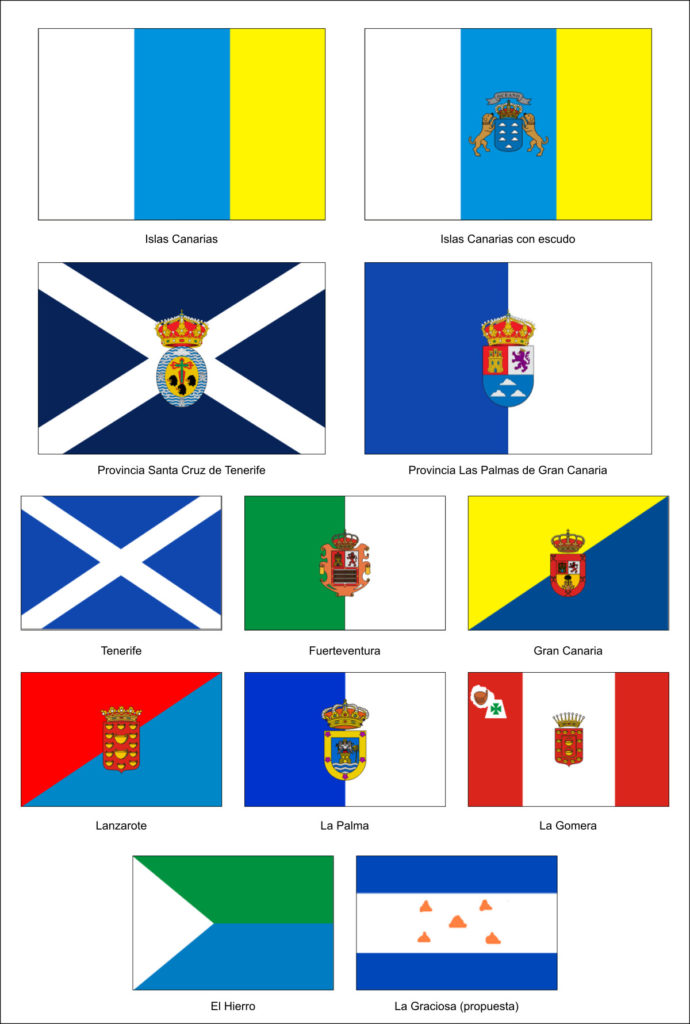
Although the law does not officially specify the meaning of the flag colors, it is traditionally assumed to be derived from the combination of the colors of the two current flags of the provinces of Santa Cruz de Tenerife and Las Palmas de Gran Canaria. The colors on the Tenerife flag are white and blue, and on the Gran Canaria flag blue and yellow. The order of colors is according to the geographical arrangement of the provinces, ie the white on the left corresponds to the western province of Tenerife, the yellow on the right indicates the eastern province of Gran Canaria. The blue that both provinces have in their flags is located in the middle.
Although officially the flag of the Canary Islands is only tricolor, it is usually used with the image of the national coat of arms, which represents the seven islands on a blue ocean background, a golden royal crown, a ribbon with the inscription Oceano and two Canarian dogs.
Flags of Gran Canaria
The flag of Gran Canaria originates in the flag of 1869, which was assigned as the registration flag of the province of Las Palmas at the same time as the flag of the province of Tenerife. At that time, the original province of the Canary Islands was divided into two separate provinces.
The flag of Gran Canaria is divided into two halves by a diagonal from the lower left corner to the upper right corner. The upper left half is yellow and the lower right is blue. In the middle is the coat of arms of Gran Canaria. It is said that the yellow upper triangle represents the sun and the lower blue the ocean. Warning. Do not confuse the flag of Gran Canaria with the flag of the province of Las Palmas de Gran Canaria, commonly referred to as the province of Gran Canaria. Also, the flags of the ammunition and the province of Las Palmas are different.

If you go on a trip, you will see, for example, 4 to 5 different flags flying in the town hall building in each city in Gran Canaria. The flag of the European Union is used as the fiftht, as Spain is a member of the EU, but this rule is not always followed.
The flag of Spain is always in the middle. It is bordered on the left by the flag of the Canary Islands and on the right by the flag of Gran Canaria. At the outer edges, they are complemented by the flag of municipality on the left and the EU flag on the right.
Did you like this article, was it useful to you? You can also support the creation of this website by sending any amount to ES08 0049 5735 1122 1616 5370, swift BSCHESMM. Include “Canaria Guide Support” in the note. Thank you for supporting.
